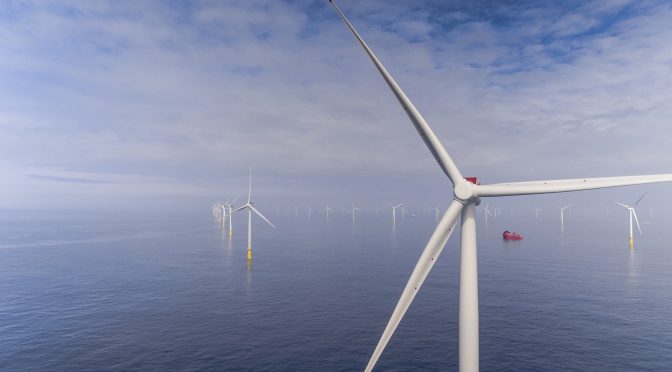Italian engineering and construction company Saipem, known for its offshore oilfield and drilling services, is increasing its involvement in the offshore wind sector.
After securing several offshore wind installation contracts for its Saipem 7000 heavy lift vessel, the company on Tuesday announced another offshore wind push, this time as a developer of an offshore wind farm.
Namely, Saipem said Tuesday that it would, in cooperation with companies AGNES and QINT’X, co-develop a wind farm in the Adriatic Sea off the coast of Ravenna.
The project will involve the installation of approximately 56 turbines on fixed foundations on the seabed at two different sites: one located more than 8 nautical miles from the shore, and the other more than 12 miles from the shore. The overall installed power will be approximately 450 MW.
For this project, Saipem has recently signed a memorandum of understanding with AGNES and QINT’X.
AGNES is a company that develops renewable energy projects in the Adriatic Sea, in particular offshore and nearshore wind farms, floating solar panels at sea, energy storage systems and hydrogen production from renewable sources. QINT’X is an Italian company specializing in renewable energy, specifically solar, wind and hydroelectric energy, and e-mobility (electric vehicles).
While the project is an offshore wind farm, Saipem said that, the project would also involve floating solar technology. The floating solar tech is based on the proprietary technology of Moss Maritime, which is part of Saipem’s XSIGHT division dedicated to developing innovative solutions to speed up the decarbonization process in the energy sector.
In this respect, Saipem said, the XSIGHT division has already begun developing integrated solutions for using renewable energy and for producing “Green” hydrogen.
“The Agnes project will be the first project to develop such integrated solutions, offering the opportunity to find an alternative solution to decommissioning O&G platforms in the Adriatic Sea,” Saipem said, without going into details on which oil and gas platforms are part of that effort.
Mauro Piasere, Chief Operating Officer of the XSIGHT Division, commented: “Saipem has long launched a process to strengthen its presence in the renewable energy sector. In particular, through the XSIGHT division, the company’s new role as developer of offshore wind farms is being defined and the Memorandum of Understanding signed with AGNES and QINT’X constitutes a new important opportunity in this direction.”
“This agreement is consistent with the new business model adopted by the company, which is increasingly becoming a leader in the field of energy transition, and introduced in 2019 as part of the agreement with Plambeck to develop wind farms with floating foundations in the Red Sea off the coast of Saudi Arabia. Through the XSIGHT division, Saipem is planning to launch similar projects in Sicily and Sardinia as well, using floating foundations for wind turbines, thus supporting the Italian shipbuilding industry,” Piasere said.
Alberto Bernabini, Chief Executive Officer of QINT’X, said: “This agreement marks another important step towards the realization of an ambitious project. Our vision is to create a new green energy hub in the Adriatic Sea, integrating multiple technologies to generate clean energy from the wind, sun and hydrogen. We are very proud and pleased to count on Saipem as a partner, a global leader in Offshore solutions, which is now set to be a main actor in the much-needed energy transition. This collaboration will allow us to harness many synergies transform Agnes Project into a reality.”
According to info on QINT’X website, Agnes is short for the Adriatic Green Network of Energy Sources. The project has been described as the biggest offshore wind park in Italy and among the first in the Adriatic sea.
Per WER’s recently released offshore wind farm report, in Italy, there’s currently one 30MW bottom fixed project in engineering and pre-fabrication in Italy and seven projects in early planning for 1.1GW. Italy has the national target of 0.9GW offshore wind capacity by 2030.


